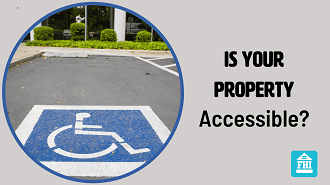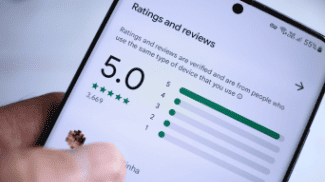Is Your Property Accessible?

Drive-By Accessibility Testing
Drive-by accessibility testing is becoming more commonplace. This is an easy way for testers to find properties that are violating accessibility laws without ever having to step foot out of their vehicle.
Accessibility testers can come from multiple different sources. For example, they could be hired by an advocacy group or a state agency. Or they could be operating individually with the help of a lawyer. Regardless of who they work for, they are out there ready to act if they stumble across any accessibility violations.
Once a violation is found, a claim can be filed, and so begins a very expensive and troublesome situation for any property management company to deal with. Keep in mind that once a lawsuit is filed, it is not limited to the specific violation already found; your entire property is put under the microscope, with each additional violation added on.
Is Your Property Truly Accessible?
Most are aware of common accessibility touchpoints: like having accessible parking spots, adequate signage, and a clear path to the main entrance. In addition, there are many other laws and different requirements when it comes to accessibility, either federal, state, or sometimes municipal, and some of them may overlap.
For example, the ADA law states that for every 25 parking spaces, you must have one accessible space, regardless of the age of the building. However, the Fair Housing Act also comes into play with its rules as far as accessibility for buildings that were built after March of 1991. Knowing which laws are applicable to you can get tricky, and it can become difficult to ensure that your property is truly accessible.
Get the Help You Need
One way to combat this is by hiring an accessibility consultant or attorney to do a walk-through of your property to identify any potential violations. Some may be hesitant due to the cost but keep in mind what the cost will be if a lawsuit happens. Lawyer fees, court costs, and potential fines or damage compensation are all on top of what will have to be paid out for any needed repairs or renovations. So, in the long run, it’s more than cost-effective; it can also potentially save you thousands of dollars.
If accessibility problems have been identified, it’s best to avoid the flawed thinking that you can just slap some paint on a few spots or put up a few more signs and call it a day. Create a list with the most visible issues being at the top and immediately create a plan to tackle them in an appropriate and lawful manner. By repairing or modifying the most visible or outside problems first, you are not giving the drive-by testers any reason to stop and investigate further. Once those repairs are completed, you can move on to any indoor maintenance that needs to be addressed to fully ensure that your property is compliant, inside and out.
By taking a proactive approach, you can avoid many costly and time-consuming problems. Keeping up to date on fair housing laws and training will aid in this. If your property meets its accessibility criteria, then you can have peace of mind that the person who was snapping pictures just might want to live there.















 Accessibility
Accessibility